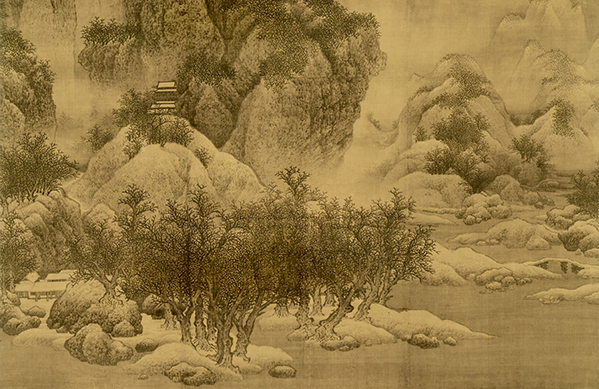
FILE PHOTO: “Snow Scenery and Cold Woods” by the Song artist Fan Kuan (c. 950–1032)
As one of the most prominent figures of contemporary Chinese aesthetics, Zhu Guangqian (1897–1986) wrote a book titled History of the Western Aesthetics. There is a contradiction in this book. On the one hand, Zhu talked about the history of Western aesthetics from ancient Greece. On the other hand, he said that in the 18th century, a man named Alexander Gottlieb Baumgarten first introduced the term “aesthetics.” Zhu himself noticed this contradiction. In his later years, Zhu wrote a book titled Meixue Shisuiji (Gleaner of Aesthetics), in which he established a clear distinction between “aesthetic ideas” and “aesthetics.” According to his understanding, prior to the emergence of “aesthetics” as a discipline in the 18th century, there had only been “aesthetic ideas.”
Although Kant made a summary of this discipline in the 18th century, it was not until the 19th century that aesthetics as a discipline matured, represented by Hegel’s philosophy on aesthetics.
Aesthetics was introduced to China in the 20th century. Although it is said that in the late 19th century a Japanese scholar translated a French book into Chinese and used the term “meixue” (aesthetics), this statement is quite controversial. There was little information about aesthetics in China at that time. People only knew that there was a discipline in Japan named “meixue.” It was Wang Guowei (1877–1927) who pioneered this discipline by fully introducing “meixue” to China after he went to Japan around 1900.
The preface of Zhu Guangqian’s book, The Psychology of Art and Literature, was written by another renowned Chinese scholar named Zhu Ziqing (1898–1948). In the preface, Zhu Ziqing compared Chinese aesthetic works prior to Zhu Guangqian’s works to foreigners in Chinese gowns, with high noses, blue eyes, and speaking Chinese mechanically and ponderously. Zhu Guangqian wrote about aesthetics in a truly Chinese way, with smooth expressions and refined language. It indicated that before Zhu’s contribution, aesthetics was quite a foreign and rigid discipline in China.
Aesthetics greatly developed in China during the 20th century, reaching great heights many times. The 1980s were boom years for aesthetics, and studies of aesthetics in ancient China flourished. It’s strange that ancient China has a long tradition of aesthetics, but the writings of the history of ancient Chinese aesthetics only began in the 1980s.
It was in the 1980s that theories of ancient Chinese aesthetics began to be formally established. This development was related to the changing attitudes of the state, academics, and the Communist Party of China (CPC) towards traditional Chinese culture. In order to overthrow imperialism and feudalism in China, the May Fourth Movement in the early 20th century made a completely clean break with traditional Chinese culture. Later, people’s attitude towards traditional Chinese culture changed over and over again. After reform and opening up, the focus of the CPC’s work was shifted to socialist construction, embarking on a comprehensive and careful study of traditional Chinese culture. Therefore, books on history started to emerge in large numbers. This is why the study on the history of Chinese aesthetics is a new topic in China.
Gao Jianping is a research fellow from the Institute of Literature at the Chinese Academy of Social Sciences.
Edited by REN GUANHONG

